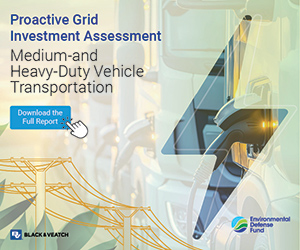What does the economics of consumer behavior tell us about how we in the utilities industry and utility regulation should talk about rate increase proposals? My essay today addresses that important question:

Nobody likes price increases. Certainly not when the price of a regularly purchased product is hiked up.
But the acceptance, or lack thereof, of a price increase by consumers is complicated. While increases are never welcome, one can say that there is a wide range of consumer responses to them.
On one end of the continuum, there’s, in effect, apathy. A consumer may be indifferent to a price increase. For a variety of reasons.
The size of a price increase might be, in the eyes of a given consumer, of little consequence. Even if the increase isn’t that small, the consumer might embrace the additional value accompanying a price increase, if there is one, and so gives the seller a pass.
Continuing to purchase the product whose price is going up might not even be all that necessary. Doing without it is doable, for the consumer, it turns out. Doable also, perhaps, is switching to an offering by a competing seller. Or switching to a close substitute of the product.
On the other end of the continuum, there’s, in effect, anger. A consumer may feel a price increase is unjust. And may even be stirred to take some sort of action against it. Such as switching to a competitor or substitute. Such as complaining to the seller. Or in the case of a utility proposing to increase its rates, a consumer may lodge a protest to the utility regulator, political representatives, and the media.
And of course, there are many possible emotions in between these two extremes, between apathy, and anger. Between indifference, in response to a price increase, and being stirred to take some sort of action against it.
Where will a given price increase fall within this continuum? The answer to this very important question, for any seller considering a price increase, including any utility considering a rate increase, is dependent on several factors. But only a few of these are determinative with respect to the degrees of customer acceptance.
Price Increase’s Value
Among the paramount factors is whether consumers perceive they are getting a proportionate increase in value for an increase in price. If the good or service is enhanced in a discernable and meaningful way, and if the enhancement is seen as the cause for the price increase, then consumers are more likely to bear the tradeoff of value for money, albeit begrudgingly.
So too, in the world of electric utilities and regulation. The same principles apply. Whether we are talking about price increases generally, for any good and service, and for rate increases specifically, for electric utility service.
It has often been said that electricity is electricity, nothing more, nothing less. But this is a myth, more so today than ever before.
Like other goods and services, electric utility service can also be enhanced in a discernable and meaningful way. Such as, for example, when a utility undergrounds electric distribution lines.
This kind of improvement lessens the incidence and duration of service outages. If communicated effectively, consumers will surely appreciate the benefit, providing peace of mind if nothing more. The improvement can also save lives and property in areas where wildfires occur. That’s a powerfully visceral benefit. Even for one who lives far from these areas.
And anyone can see that undergrounding costs money, a lot of it, which someone needs to pay for. Again, if communicated effectively. Which is absolutely essential with respect to a price increase’s benefits, as well as the costs the utility must incur to make those benefits happen for consumers.
What do we mean by effectively communicating a valued improvement in electric utility service? One possible metric is the “can you picture it” test. That is, to what extent has a utility communicated an engaging image for the mind’s eye, capturing and characterizing an enhancement’s value to individual consumers?
And how does a seller communicating about raising prices, or a utility communicating about raising rates, overcome the increasing tendency of many Americans to doubt the veracity of institutions and companies? Again, making value visual can help. As can keeping the claims about value simple and straightforward. In a base rate case that I was involved in a dozen years ago, we compared a consumer’s cost for electric utility service per day to a consumer’s cost for a popular coffee drink, a beer, or a slice of pizza.
Still another example of an enhancement to electric utility service is when a utility builds generation, storage, and transmission facilities that will drive down greenhouse gas emissions. This kind of improvement makes the use of electricity by consumers cleaner. It’s a win for them, as we all work to slow climate change, on behalf of our children and grandchildren.
And as in the case of undergrounding, anyone can see that building generation, storage, and transmission facilities costs a lot of money, which someone needs to pay for. As said, if communicated effectively.
A discernable and meaningful enhancement to the quality of electric utility service, to its value, can move the hearts and minds of utility consumers. They will generally move further away from that anger end of the scale. And further toward the apathy end of the scale.
It might be expecting too much, that an appreciable number of consumers will say, “I’m more than happy my utility is doing this and fine with picking up my share of the tab.” But any movement in that direction increases the likelihood that regulators can and will positively respond to the utility’s proposal.
Indeed, consumer acceptance and consumer value could be considered as the opposite sides of a coin. They are that closely related.
And a third side of the coin, if you can imagine that, is consumer affordability. Consumer value begets consumer acceptance which begets consumer affordability, if thought about in biblical terms.
Everything is Relative
The average household spends several thousands of dollars monthly on goods and services and paying the electric bill is typically a little more than two percent of this total; though higher in the South Census Region. Even low- and moderate-income consumers spend a few thousands of dollars monthly on goods and services and paying the electric bill is typically three percent or so of this total; again, higher in the South.
As my friend Larry Glover likes to say, LMI customers of utilities are customers. They too would better appreciate the rationale for a price increase if a utility has proposed something of perceptible value, to them. They too would not resent as much the reallocation of a couple of dollars or so from some other purchase to paying the electric bill.
Not that LMI customers or customers generally would be overjoyed at the prospect of spending a couple of dollars or so more on electricity. And having to make do with spending a couple of dollars or so less on something else. But at least we’re talking about a couple of dollars or so rather than a substantially larger amount.
It would be different if electric bills were a much bigger chunk of monthly expenditures. A certain percentage bill increase would then be more like ten, twenty, thirty dollars or above, on average. That might be a big hit for some households.
But fortunately, this just isn’t the case for the overwhelming majority of LMI customers. Especially those living in urban areas. Especially those living in multi-family houses where kilowatt-hour consumption per household is markedly below average.
Price Increase’s Magnitude
When the price of a good or service is increased, how will consumers react? Understanding how they tend to respond, and why, can help sellers plan for and communicate about price increases to improve consumer acceptance.
This applies whether the seller distributes breakfast cereal, video streaming, or electricity. Even though each have distinct characteristics; no less, electricity.
Regulators set electricity price increases, rather than the sellers of electricity – electric utilities. And only at the culmination of a month’s long quasi-judicial process. Utilities propose an increase. But then the ultimate decision to increase “rates,” and by how much, is out of their hands, save the persuasiveness of their advocacy during that process.
That is quite a distinction. However, the seller of every good and service faces unique challenges when raising prices.
Cereal companies, for instance, must contend with what competing cereal companies will do. And they must contend with what both in- and away-from-home sellers of breakfast foods will do. The point is, all sellers encounter pushback from consumers when raising prices. That most certainly includes utilities.
Price increases have of course a range of magnitudes. The magnitude really matters. A price increase could be imperceptible, or so slight it elicits little or no reaction.
Each of us have encountered, countless times, what felt like a minor price increase, if we noticed at all, and sloughed it off. We might have been aggravated. Though not enough to waste our time fretting much.
At what magnitude do price increases go from insignificant to the consumer, to irritating, to infuriating? This is such a critical question for sellers. For they should aspire to be on the lower side of the first threshold between insignificant and irritating. Or failing that, they should aspire to be on the lower side of the second threshold between irritating and infuriating.
We know water goes from a solid to a liquid at thirty-two degrees Fahrenheit and from liquid to a gas at two hundred and twelve degrees. Alas, the thresholds between states of consumer response to price increases are hardly invariant and universal as for the thresholds between ice, liquid water, and vapor.
People Vary
Different consumers have different tolerances for increases in prices. Indeed, different consumers have different tolerances for increases in the prices of different goods and services.
Some people, it seems, watch every penny of every purchase. Raise a price and you know they’ll be piqued. Others are clearly less attentive to small swings in prices, or simply care less when they take place.
The complications compound. Some people are more irritated when there’s an increase, when there hasn’t been one for a while. Some are more irritated when there’s an increase, when there was another not long ago, and another not long before that. And of course, some are cross when either situation occurs.
The best that sellers raising prices can hope for, and plan to do, is maximize the proportion of consumers who accept the increase, and at the same time minimize how exasperated the remaining proportion of consumers will be. As we have said herein, both can be best accomplished by tying the increase tightly to enhancing value, and importantly, communicating that effectively.
Price Increases and Consumer Sentiment
These tendencies of consumers, to accept or not accept price increases, or something in between, change over time. When consumer sentiment is relatively high, as it was in the late nineteen nineties, and in the late twenty teens, many consumers probably became less particular about price hikes.
The converse is true too. When consumer sentiment is relatively low, as it was during the late twenty aughts and early twenty teens, and more recently, in the early twenty twenties, many consumers probably became more particular about price hikes. For many people, all those price increases must have felt like sellers were piling on.
Consumer sentiment dropped precipitously in the pandemic’s first couple of years. People across several demographics were in a sour mood about making ends meet. In the most recent couple of years, people experienced price pressures from several directions, from the rise in inflation and then interest rates.
Consumer sentiment is recovering, lately. The foundation for this or any other rise in consumer sentiment is greater optimism about current and future economic prospects. Naturally, people tend to be more open-minded about price increases, even if irked about them, when a price increase is part of package deal, complete with improvements in the product.
What’s a Seller to Do?
Increasing prices, as essential as that is for sellers from time to time, is almost always an uphill battle, from the standpoint of consumer acceptance or lack thereof. That is certainly the case when electric utilities propose to increase rates.
This article has referred to the few ways that utilities can reduce the natural ire of utility customers and regulators when receiving rate proposals. Those ways are indeed few. Though they are also powerful.
In particular, to the maximum extent practicable, a proposal should emphasize the value of the enhancement of electric utility service to individual customers. It should demonstrate to the greatest degree that it is this enhancement that is the principal reason for the price increase. And, both themes should be explained in an engaging format for the mind’s eye, capturing and characterizing an enhancement’s value to individual consumers.
A last word on this. The format of utility rate proposals in our day largely mimics the format of rate proposals of the mid-twentieth century, in the days of Bonbright. James C. Bonbright that is, whose “Principles of Public Utility Rates” was first published in 1961. That’s sixty-three years ago!
The world has changed immensely since then. Including how people get information. Including the politics around utility regulatory matters. So, shouldn’t we rethink how we articulate the proposals by utilities to maintain and improve our infrastructure?
Steve Mitnick, Executive Editor, Public Utilities Fortnightly, and President, Lines Up, Inc. | E-mail me: mitnick@fortnightly.com



